

Project planning for developers
Create issues, break them into tasks, track relationships, add custom fields, and have conversations. Visualize large projects as spreadsheets or boards, and automate everything with code.
Bored of boards?
Switch to tables.
Built like a spreadsheet, project tables give you a live canvas to filter, sort, and group issues and pull requests. Tailor them to your needs with custom fields and saved views.

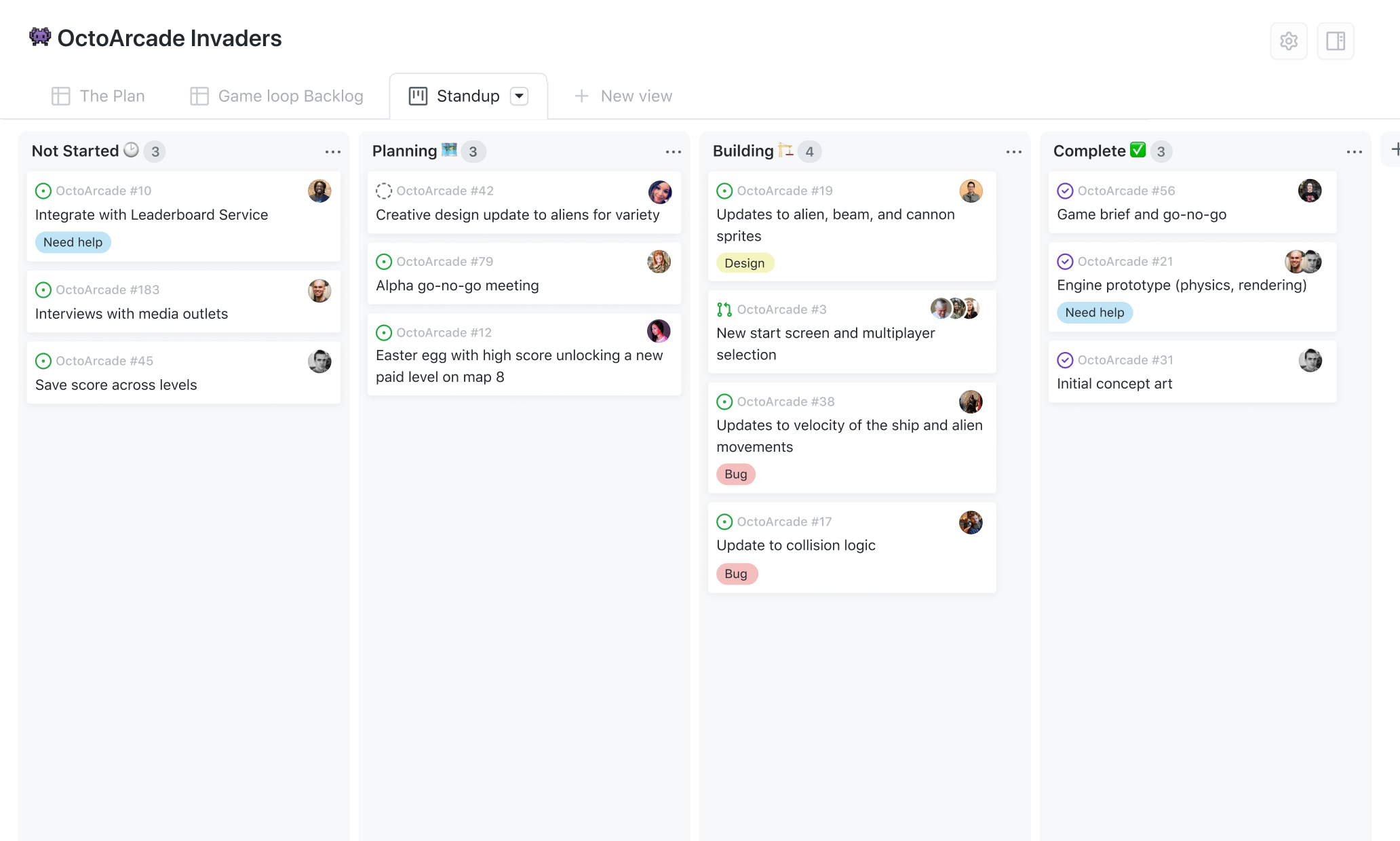
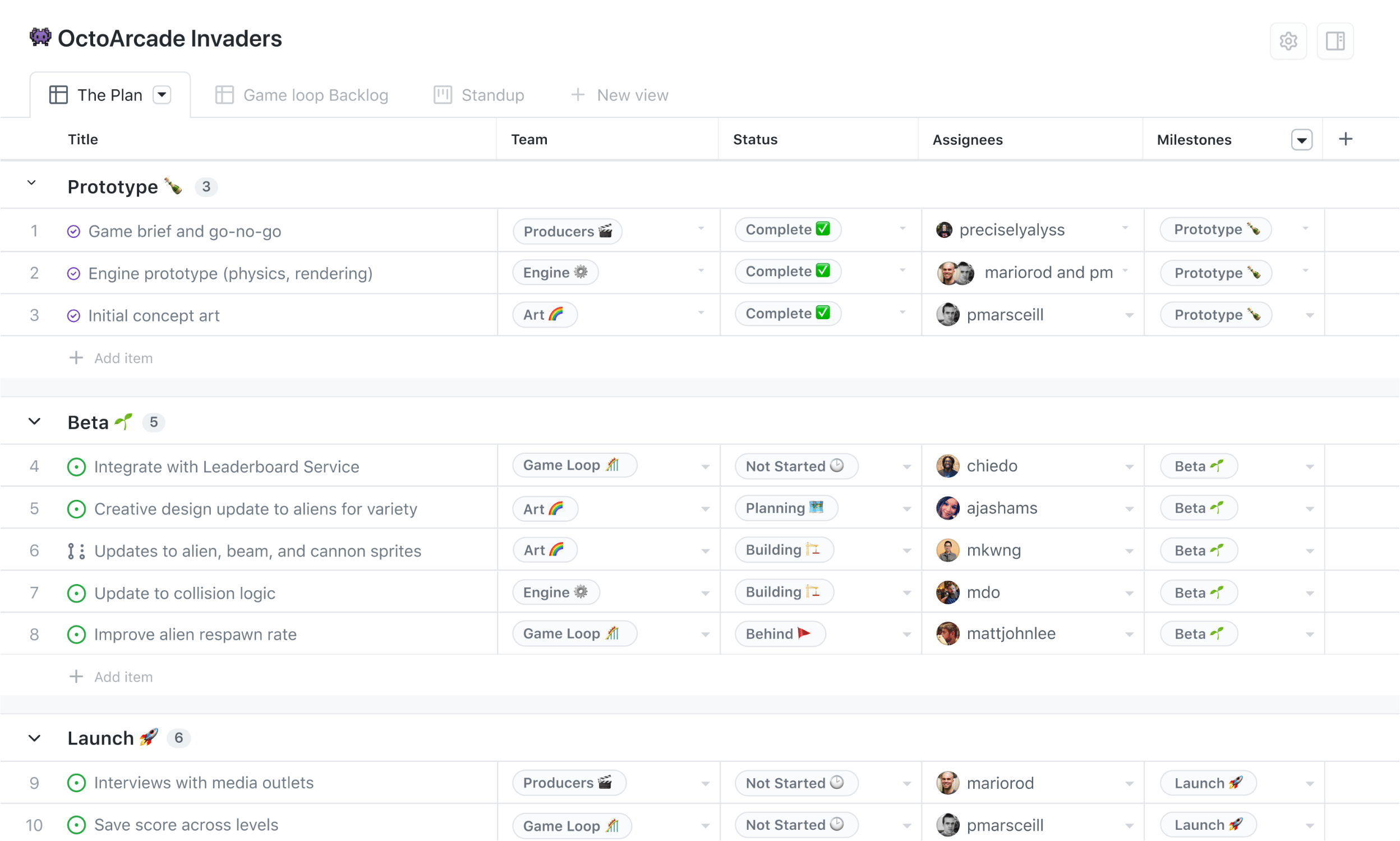
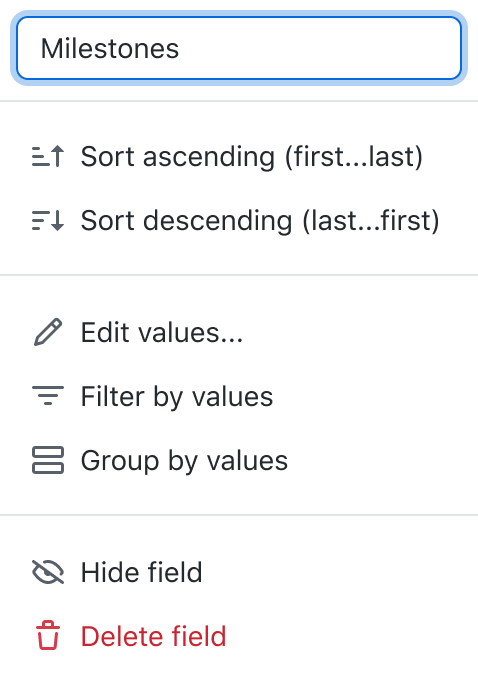

Break issues into actionable tasks
Tackle complex issues with task lists and track their status with new progress indicators. Convert tasks into their own issues and navigate your work hierarchy.
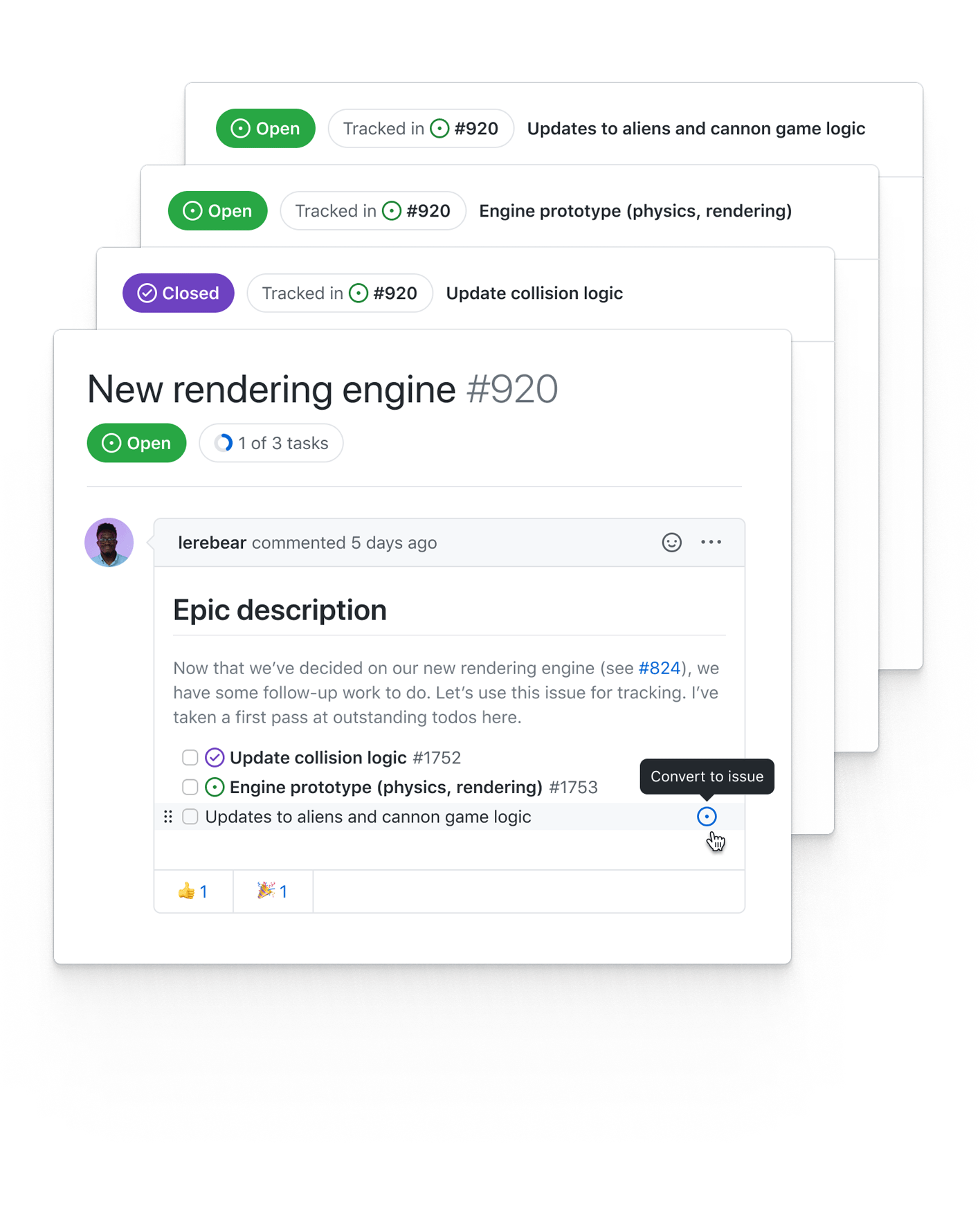
Move conversations forward
Express ideas with GitHub Flavored Markdown, mention contributors, react with emoji, clarify with attachments, and see references from commits, PRs, releases, and deploys. Coordinate by assigning contributors and teams, or by adding them to milestones and projects. All in a single timeline.
- Upload and attach videos to comments
- Dive into work faster with issue forms and templates
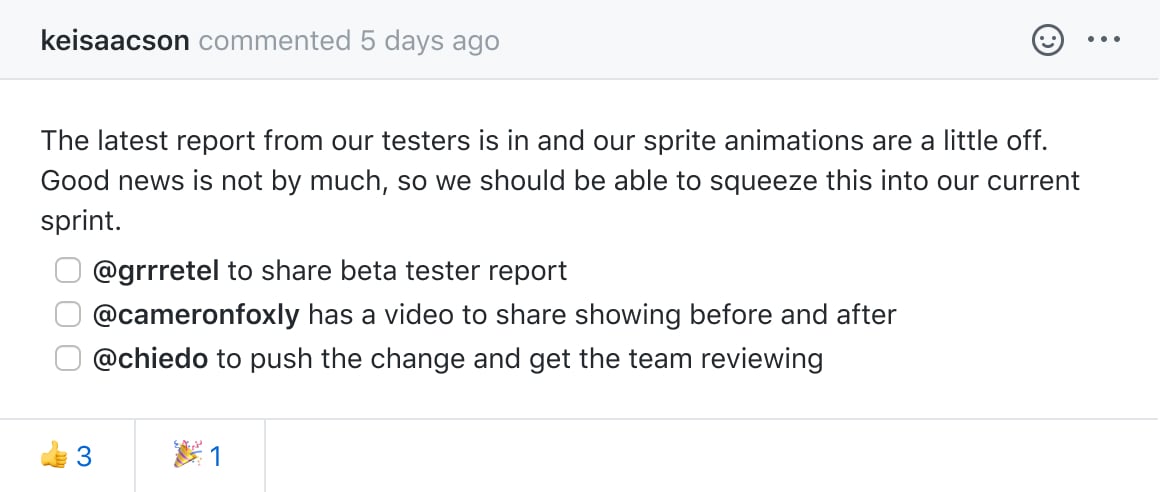
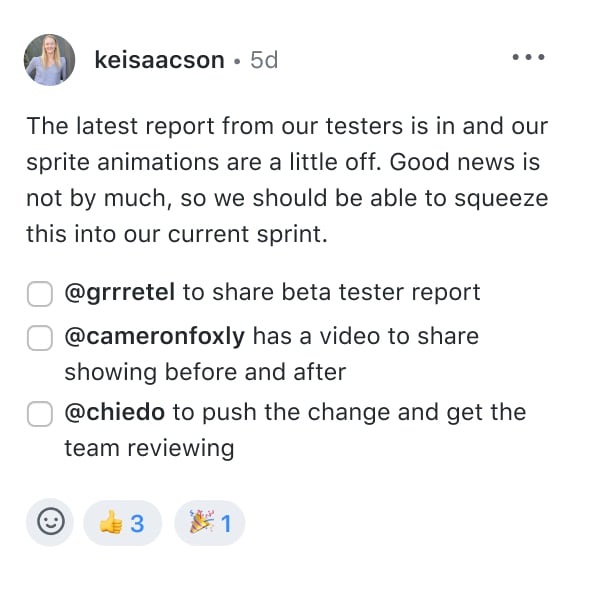


- Upload and attach videos to comments
- Dive into work faster with issue forms and templates
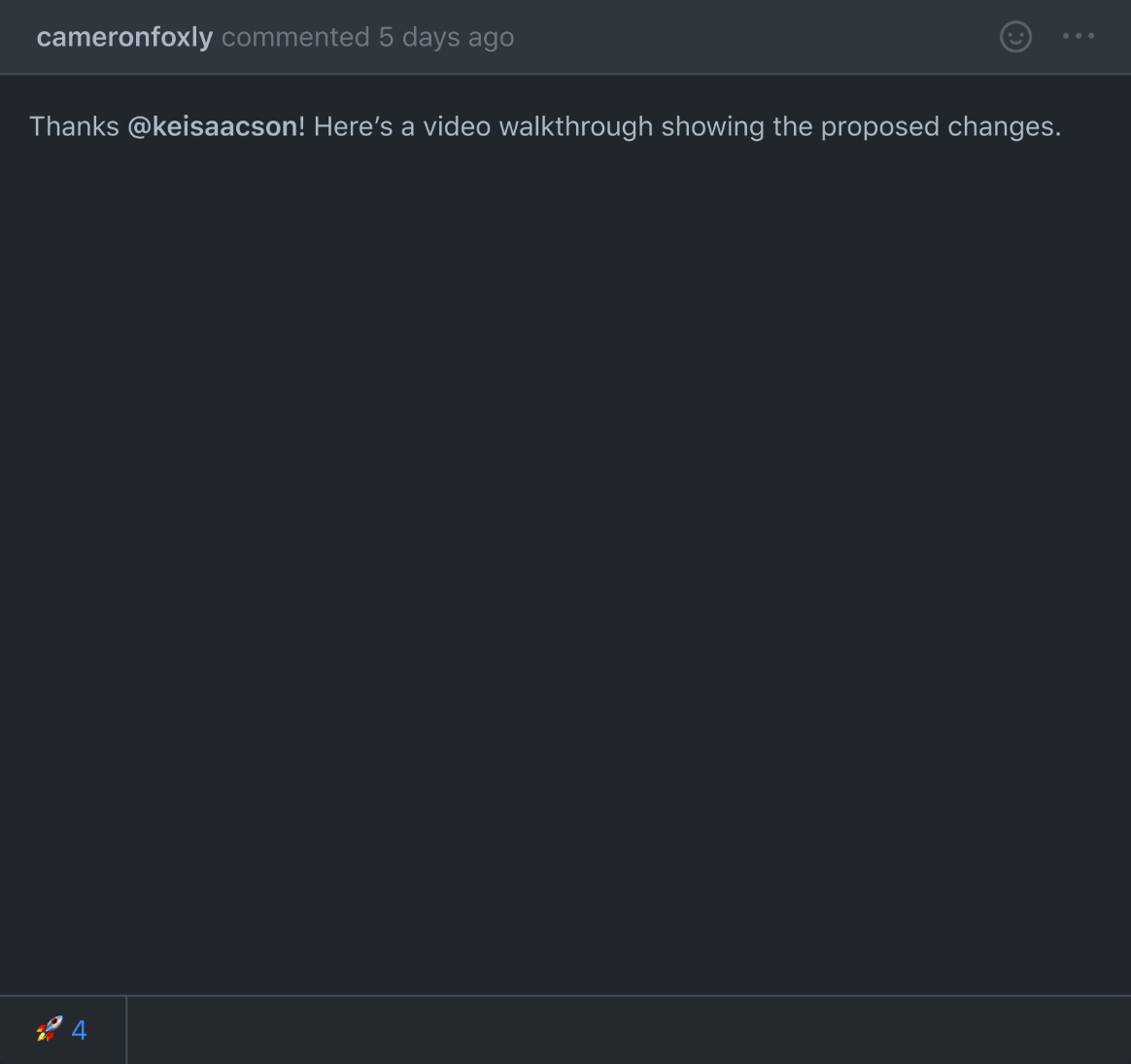
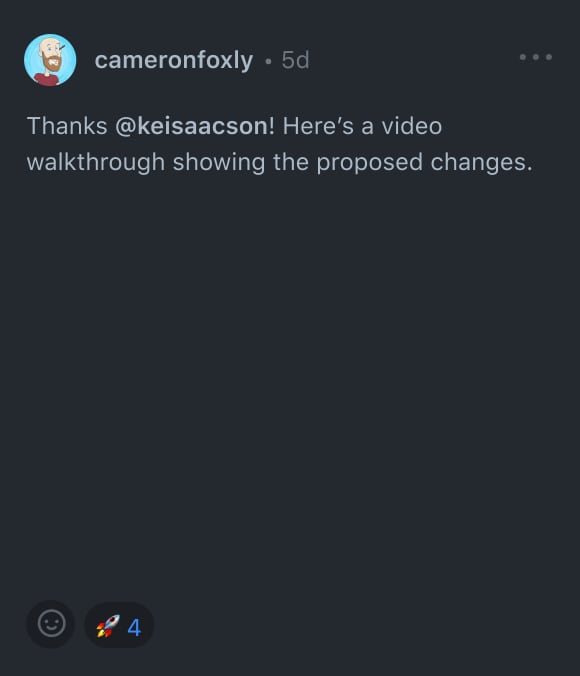

Create views
for how you work
Save views for sprints, backlogs, teams, or releases. Rank, group, sort, and filter issues to suit the occasion. Choose between tables, boards, and timelines (coming soon).

Work at keyboard speed
No mouse? No problem. Every action you can take with the mouse has a keyboard shortcut or command. Filter, sort, group, and assign issues. Your hands never leave the keyboard.
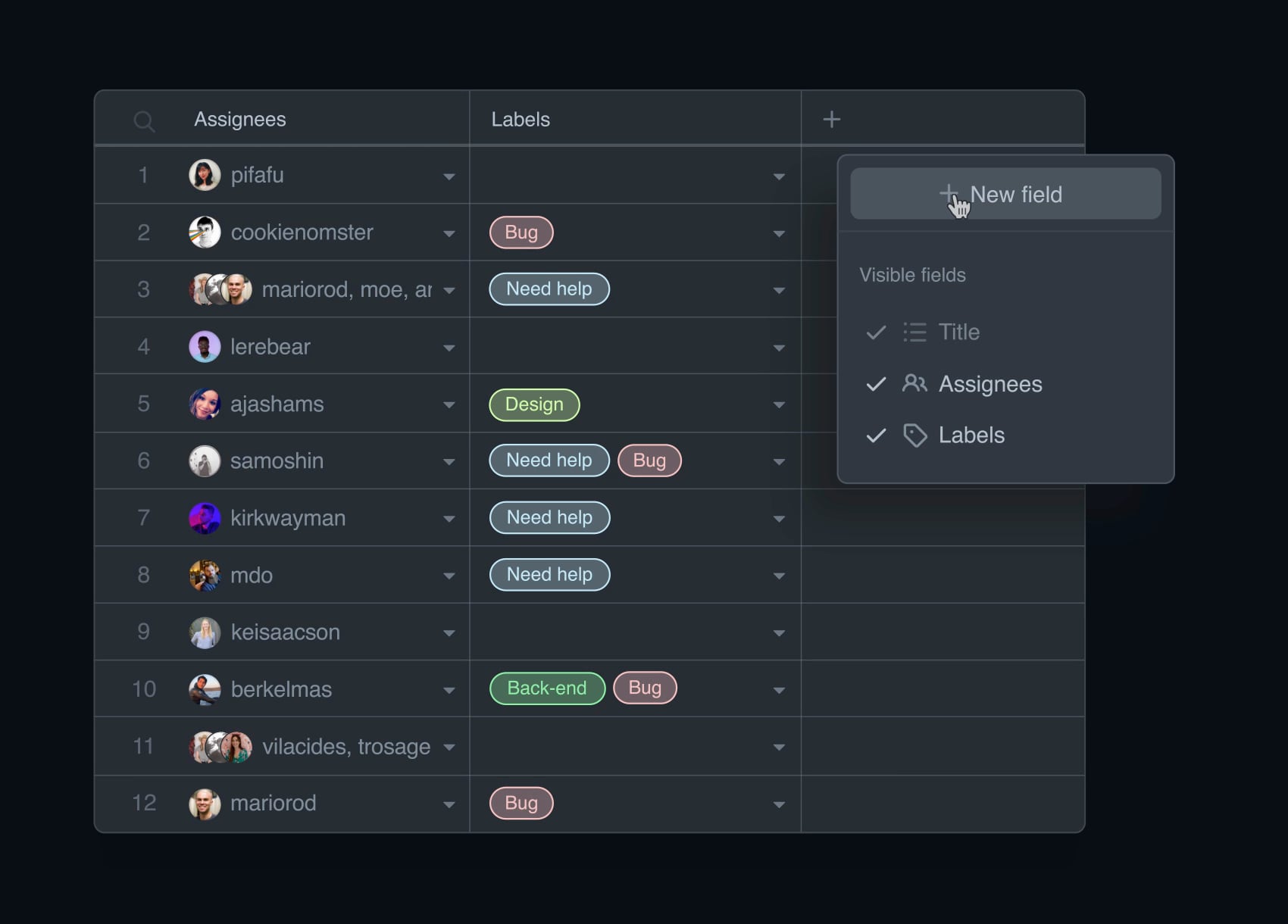
Manage work automatically
Accelerate your project planning with automations. Automatically triage issues, set values for custom fields, react to changes, or schedule something. You can even combine them to run an Action.
Issues, wherever you look
Issues can be viewed, created, and managed in your browser, your favorite terminal, or on your phone or iPad.
GitHub CLI
View, update, and create issues without ever leaving your terminal.
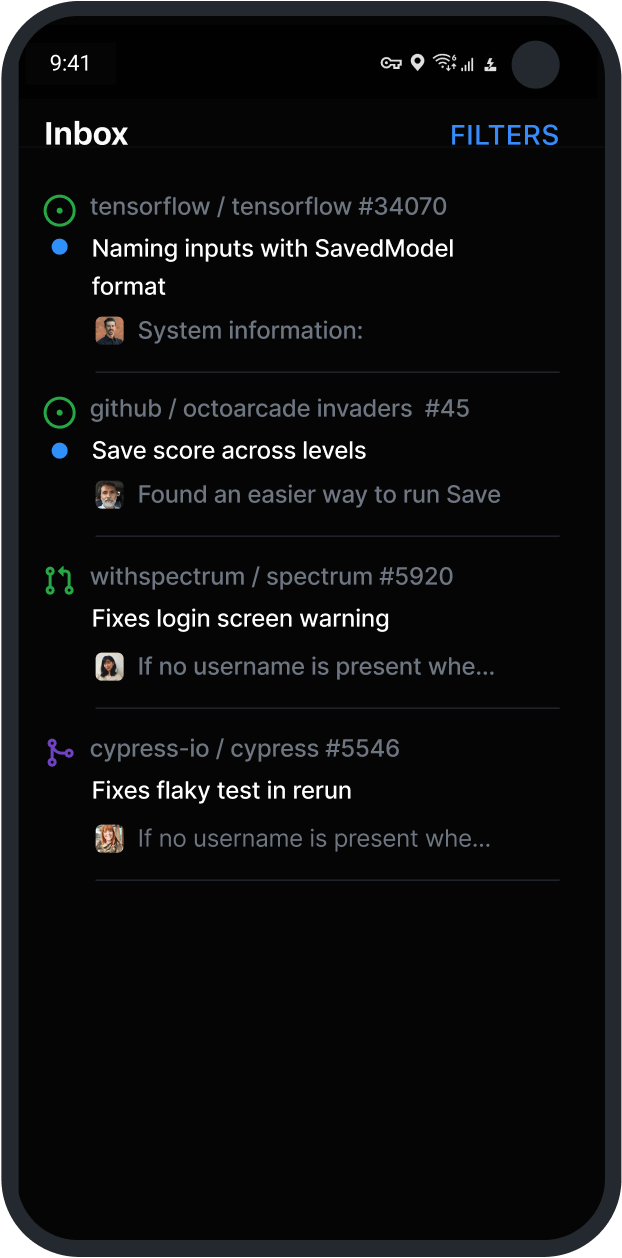
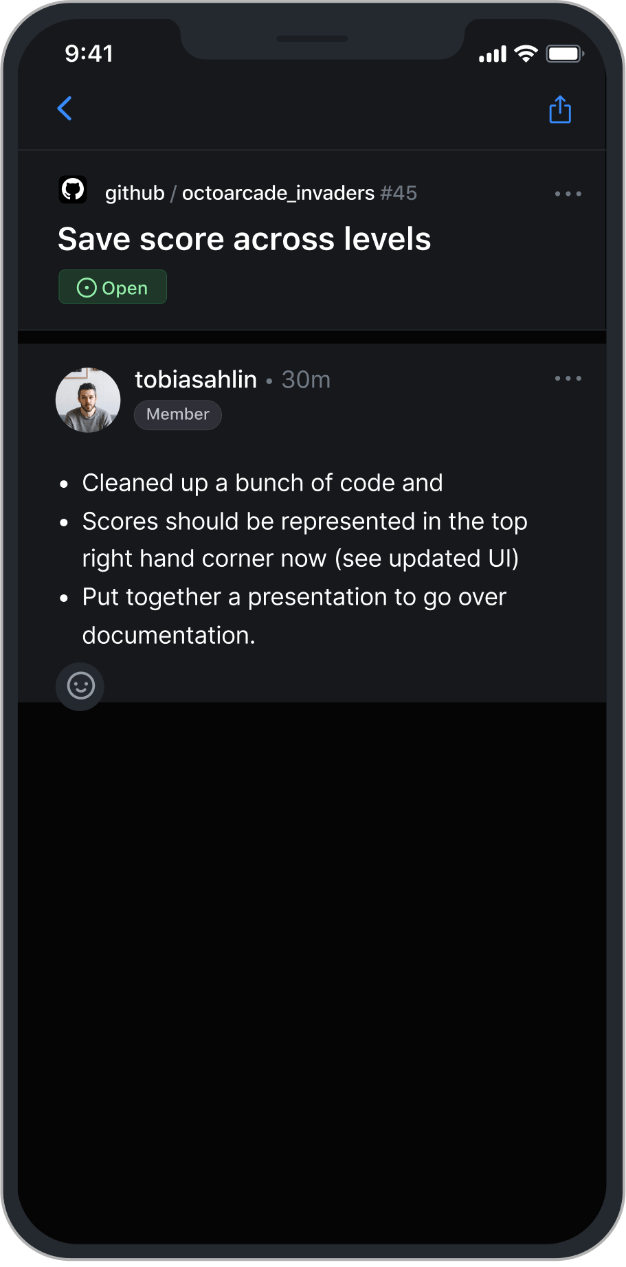
GitHub Mobile
Create and manage issues on the go with our native iOS and Android mobile apps.

“ The new planning and tracking functionality keeps my project management close to my code. I no longer find myself needing to reach for spreadsheets or 3P tools which go stale instantly.Dan Godfrey Development Manager

Frequently asked questions
Why GitHub Issues?
We all need a way to plan our work, track issues, and talk about the things we build. Our answer to this universal question is GitHub Issues, and it’s built-in to every repository. GitHub’s issue tracking is special because of our focus on simplicity, references, and elegant formatting.
With GitHub Issues you can express ideas with GitHub Flavored Markdown, assign and mention contributors, react with emoji, clarify with attachments and videos, plus reference code like commits, pull requests, and deploys. With task lists you can break big issues into tasks, and then further organize your work with milestones and labels, and track relationships and dependencies.
We built GitHub issues for developers. It is simple, flexible, and powerful.
Why project tables and boards?
As teams and projects grow, how we work evolves. Tools that hard-code a specific methodology are too specific and rigid to flex to whatever the moment demands. Often, we find ourselves creating a spreadsheet or pulling out a notepad, just to have the space to think. But then our planning is disconnected from where the work happens and quickly goes stale.
The new Projects connect your planning directly to the work your teams are doing, and flexibly adapt to whatever your team needs at any point. Built like a spreadsheet, project tables give you a live canvas to filter, sort, and group issues and pull requests. You can use it, or the accompanying project board, along with custom fields, to track a sprint, plan a feature, or manage a large-scale release.
How much will the new GitHub Issues cost?
Our plan is to continue to bundle GitHub Issues and its new project planning capabilities in our Free, Pro, Team, and Enterprise plans at no additional cost.
Will the Beta be available in GitHub Enterprise Server?
GitHub Enterprise Server support follows our normal cadence of one to two quarters before we enable the functionality on-premises.
How does this co-exist with other features like the existing kanban boards?
Once the Beta is enabled on your account, the organization's projects page will display both projects (classic kanban) and the new beta projects (with table and custom field) side by side. They will coexist through the beta period, with classic projects automatically updating to leverage the new features prior to general availability.
It is important to note that at this time there are no migration tools available, both from existing projects or other planning and tracking tools.
How can I create a new project at the repo level?
Projects can be created at either the organization or user level, once created you can easily add your project to the existing projects tab within a repository. Allowing you to keep it even closer to your code.
What is on the roadmap for the new GitHub Issues?
We are really excited to start this journey with all of you.
Our roadmap towards general availability (GA) will evolve, but expect improvements to the core flows and new functionality to be continuously added. Top features include:
- Built in hierarchy and task-list support
- Issue level custom fields that expand repositories (labels, milestones, etc.)
- A new project timeline to plan and track work













